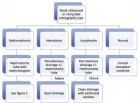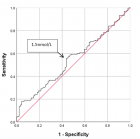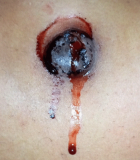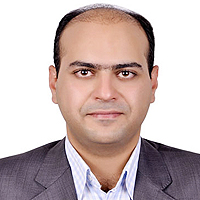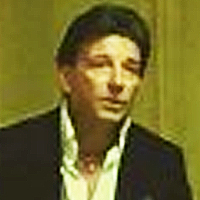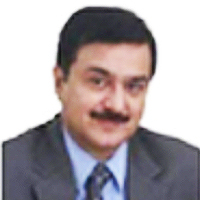Abstract
Research Article
Clown language training in Dental education: Dental Student’s Perspective
Siddharth Tevatia*, Richa Dua, Vinita Dahiya, Nikhil Sharma, Rahul Chopra and Vidya Dodwad
Published: 09 May, 2017 | Volume 2 - Issue 2 | Pages: 049-056
Clowning is a form of humour. It is an art form that invites play, interaction, and laughter. Clown Care is a programme in hospitals and medical centres involving visits from specially trained hospital clowns. Clowning helps patients to focus on something other than their illness. Olsson et al. and Spitzer suggested that clown care could create a warm climate, promote good interpersonal relationships, and relieve feelings of frustration, anxiety, or hostility. Hospital clowns work worldwide as a health humanization resort, providing interplay with patients, family and staff creating a positive emotional state that fosters affirmative environmental conditions. This type of activity varies greatly in terms of professionalism, accountability and artistic methods. Promotion of emotional and psychosocial well-being of patients transcends opportunities for oral health promotion activities in hospitals, schools and community. Previous research reports on clown training reflects attitude-building potential for the healthcare students provided that it is performed in a deep, essential, strict and continuous fashion in a facultative manner rather than mandatory allowing the student to build his own artistic, professional and personal path. Thus, the prospect of introducing training curriculum of this underrated non-technical skill for dental students in Indian dental education system needs to be harnessed.
Read Full Article HTML DOI: 10.29328/journal.johcs.1001011 Cite this Article Read Full Article PDF
Keywords:
Clown; Clown Doctor; Humor; Positive emotions; Complementary
References
- Carp Ch. Clown therapy: The creation of a clown character as a treatment intervention. The Arts in Psychotherapy. 1998; 25: 245-255.
- Warren B. Fools for health: Introducing clown-doctor to Windsor hospitals. In B. Warren (Ed.), creating a theatre in your classroom and community. Ontario, Canada: Captus Press. 2002; 225-246.
- Adams P. Humor and love: the origination of clown therapy. Postgrad Med J. 2002; 78: 447-448. Ref.: https://goo.gl/vG3MrN
- Koller D, Gryski C. The life threatened child and the life enhancing clown: towards a model of therapeutic clowning. Evid Based Complement Alternat Med. 2008; 5: 17-25. Ref.: https://goo.gl/ClkJ8j
- Tener D, Lev-Wiesel R, Franco NL, Ofir S. Laughing through this pain: medical clowning during examination of sexually abused children: an innovative approach. J Child Sex Abuse. 2010; 19: 128-140. Ref.: https://goo.gl/UXba0j
- Bennett MP, Zeller, JM, Rosenberg L, McCann J. The effect of mirthful laughter on stress and natural killer cell activity. Altern Ther Health Med. 2003; 9: 38-45. Ref.: https://goo.gl/q4MRf4
- Winnicott DW. [1971]. Playing and reality. London and New York: Routledge. 2005.
- Green T. (Ed). Folklore: An encyclopedia of beliefs, customs, tales, music, and art. Santa Barbara, CA: ABC CLIO. 1997.
- Landy R. Persona and performance: The meaning of role in drama, therapy, and everyday life. New York: The Guilford Press. 1993.
- Handelman D. The clown as a symbolic type. In Models and mirrors: towards anthropology of public events. New York: Cambridge University. 1990; 236-262.
- Leef BL, Hallas D. The sensitivity training clown workshop: Enhancing therapeutic communication skills in nursing students. Nurs Educ Perspect. 2013; 34: 260-264. Ref.: https://goo.gl/zGBLZh
- Nuttman-Shwartz, O Scheyer R, Tzioni H. Medical clowning: Even adults deserve a dream. Soc Work Health Care. 2010; 49: 581-598. Ref.: https://goo.gl/F2nGc0
- Higueras A, Carretero-Dios H, Muñoz JP, Idini E, Ortiz A, et al. Effects of a humor-centered activity on disruptive behavior in patients in a general hospital psychiatric ward. International Journal of Clinical and Health Psychology. 2006; 6: 53-64. Ref.: https://goo.gl/OJklzp
- Landy R. The couch and the stage: Integrating words and actions in psychotherapy. Lanham, MD: Jason Aronson. 2008.
- Grinberg Z. Medical clowning: Therapeutic intervention in short term and continuous stress situations that stem from illness and hospitalization: The drama therapy viewpoint. Unpublished MA thesis, Lesley University, Graduate School of Arts and Social Sciences. 2009.
Figures:

Figure 1

Figure 2

Figure 3

Figure 4
Similar Articles
-
Clown language training in Dental education: Dental Student’s PerspectiveSiddharth Tevatia*,Richa Dua,Vinita Dahiya,Nikhil Sharma,Rahul Chopra,Vidya Dodwad. Clown language training in Dental education: Dental Student’s Perspective . . 2017 doi: 10.29328/journal.johcs.1001011; 2: 049-056
Recently Viewed
-
Sex after Neurosurgery–Limitations, Recommendations, and the Impact on Patient’s Well-beingMor Levi Rivka*, Csaba L Dégi. Sex after Neurosurgery–Limitations, Recommendations, and the Impact on Patient’s Well-being. J Neurosci Neurol Disord. 2024: doi: 10.29328/journal.jnnd.1001099; 8: 064-068
-
Physiotherapy Undergraduate Students’ Perception About Clinical Education; A Qualitative StudyPravakar Timalsina*,Bimika Khadgi. Physiotherapy Undergraduate Students’ Perception About Clinical Education; A Qualitative Study. J Nov Physiother Rehabil. 2024: doi: 10.29328/journal.jnpr.1001063; 8: 043-052
-
Clinical Significance of Anterograde Angiography for Preoperative Evaluation in Patients with Varicose VeinsYi Liu,Dong Liu#,Junchen Li#,Tianqing Yao,Yincheng Ran,Ke Tian,Haonan Zhou,Lei Zhou,Zhumin Cao*,Kai Deng*. Clinical Significance of Anterograde Angiography for Preoperative Evaluation in Patients with Varicose Veins. J Radiol Oncol. 2025: doi: 10.29328/journal.jro.1001073; 9: 001-006
-
Regional Anesthesia Challenges in a Pregnant Patient with VACTERL Association: A Case ReportUzma Khanam*,Abid,Bhagyashri V Kumbar. Regional Anesthesia Challenges in a Pregnant Patient with VACTERL Association: A Case Report. Int J Clin Anesth Res. 2025: doi: 10.29328/journal.ijcar.1001027; 9: 010-012
-
Cystoid Macular Oedema Secondary to Bimatoprost in a Patient with Primary Open Angle GlaucomaKonstantinos Kyratzoglou*,Katie Morton. Cystoid Macular Oedema Secondary to Bimatoprost in a Patient with Primary Open Angle Glaucoma. Int J Clin Exp Ophthalmol. 2025: doi: 10.29328/journal.ijceo.1001059; 9: 001-003
Most Viewed
-
Evaluation of Biostimulants Based on Recovered Protein Hydrolysates from Animal By-products as Plant Growth EnhancersH Pérez-Aguilar*, M Lacruz-Asaro, F Arán-Ais. Evaluation of Biostimulants Based on Recovered Protein Hydrolysates from Animal By-products as Plant Growth Enhancers. J Plant Sci Phytopathol. 2023 doi: 10.29328/journal.jpsp.1001104; 7: 042-047
-
Sinonasal Myxoma Extending into the Orbit in a 4-Year Old: A Case PresentationJulian A Purrinos*, Ramzi Younis. Sinonasal Myxoma Extending into the Orbit in a 4-Year Old: A Case Presentation. Arch Case Rep. 2024 doi: 10.29328/journal.acr.1001099; 8: 075-077
-
Feasibility study of magnetic sensing for detecting single-neuron action potentialsDenis Tonini,Kai Wu,Renata Saha,Jian-Ping Wang*. Feasibility study of magnetic sensing for detecting single-neuron action potentials. Ann Biomed Sci Eng. 2022 doi: 10.29328/journal.abse.1001018; 6: 019-029
-
Pediatric Dysgerminoma: Unveiling a Rare Ovarian TumorFaten Limaiem*, Khalil Saffar, Ahmed Halouani. Pediatric Dysgerminoma: Unveiling a Rare Ovarian Tumor. Arch Case Rep. 2024 doi: 10.29328/journal.acr.1001087; 8: 010-013
-
Physical activity can change the physiological and psychological circumstances during COVID-19 pandemic: A narrative reviewKhashayar Maroufi*. Physical activity can change the physiological and psychological circumstances during COVID-19 pandemic: A narrative review. J Sports Med Ther. 2021 doi: 10.29328/journal.jsmt.1001051; 6: 001-007

HSPI: We're glad you're here. Please click "create a new Query" if you are a new visitor to our website and need further information from us.
If you are already a member of our network and need to keep track of any developments regarding a question you have already submitted, click "take me to my Query."







